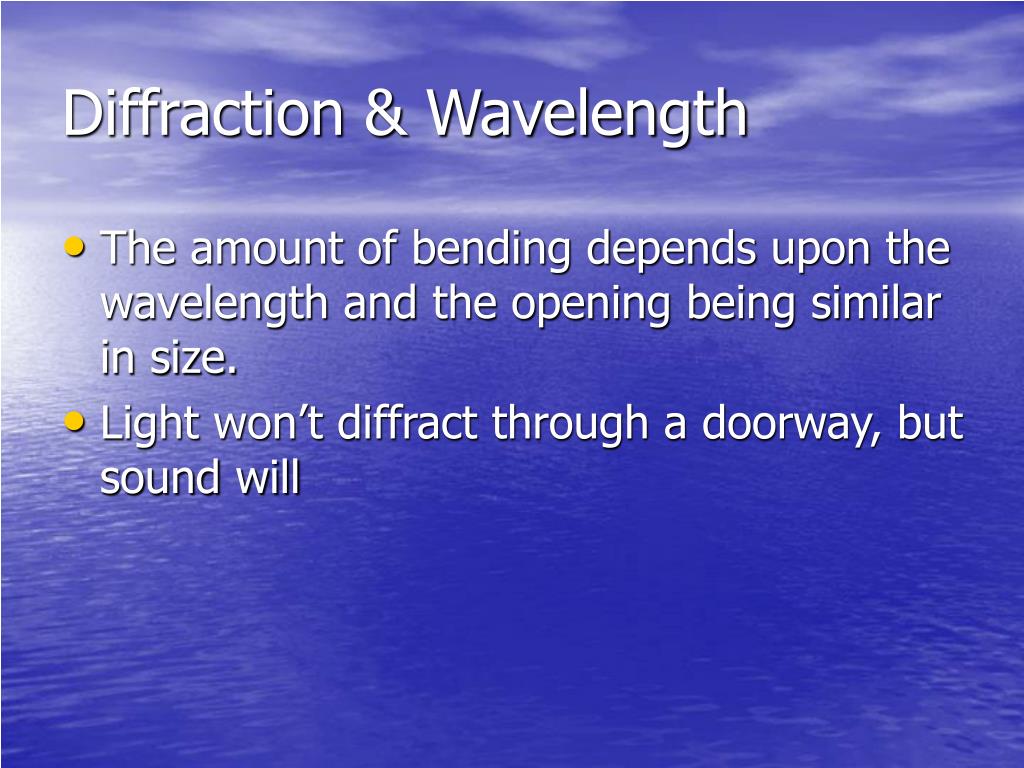

As noticed, diffraction effects are most noticeable when light interacts with objects having sizes on the order of the wavelength of light. The angle found in part (a) is extraordinarily small (less than 1/50,000 of a degree), because the primary mirror is so large compared with the wavelength of light. We can also show this phenomenon mathematically, by. Calculate the wavelength of the monochromatic light where the second order image is diffracted through an angle of 25o using a diffraction grating with 300. Once again, alternate slits interfere with each other, as the waves travel distances that differ by a half-wavelength. Step-by-step solution Step 1 of 3 Given: Plane: (113) Material: FCC Platinum 20.1542 nm n 1 According to s law, 22d sin 0 - (1) In case.

This happens when the distance x dsin equals one-quarter of a wavelength. Transcribed Image Text: Determine the expected diffraction angle for the first-order reflection from the (113) set of planes for FCC platinum when monochromatic radiation of wavelength 0.1542 nm is used. This information is useful to chemists and can provide data on new crystal lattice structures.\,rad) = 0.56 \,ly. There is one other time when a dark fringe occurs. However, if the crystal structure is unknown, then the incoming x-ray information can be used to calculate details about the crystal lattice structure. If the crystal structure is known, then Bragg's Law can be used to calculate the wavelength of the x-rays hitting its surface. Additionally, when illuminated with a different, this time of known wavelength 0.137 nm, a second-order maximum is detected at 37.3. The Bragg's Law equation is used in chemistry to help describe the scattering effects when an x-ray is shone onto a crystal lattice, and is often used for X-Ray Diffraction (XRD). On a certain crystal, a first-order X-ray diffraction maximum is observed at an angle of 27.1 27.1 relative to its surface, using an X-ray source of unknown wavelength.

However, this can be automatically converted to other angle units via the pull-down menu. If you divide both sides of the equation c f c f by n, you get c/n v f/n c / n v f / n. INSTRUCTIONS: Choose the preferred units and enter the following: () the wavelength of ray (d) the distance between layers of atoms (n) order of. ( d) the distance between layers of atomsĪngle of Incidence (θ) The calculator returns the angle in degrees. The Angle of Incidence (Bragg's Law) calculator uses Bragg's Law equation (n 2dsin) to compute the angle of incidence () based on the wavelength () of light, the distance between layers of atoms (d), and the order of diffraction (n).INSTRUCTIONS: Choose the preferred units and enter the following: For instance, changing the orientation continuously, i.e., changing until Bragg’s Law is satisfied. The diffraction can be considered to occur for a given wavelength and set of planes. The Angle of Incidence (Bragg's Law) calculator uses Bragg's Law equation (nλ = 2dsinθ) to compute the angle of incidence ( θ) based on the wavelength (λ) of light, the distance between layers of atoms ( d), and the order of diffraction ( n). The diffraction has three parameters i.e, the wavelength of X rays, The crystal orientation defined by the angle The spacing of the crystal planes, d. (a) Monochromatic light passing through a single slit has a central maximum and many smaller and dimmer maxima on either side.


 0 kommentar(er)
0 kommentar(er)
